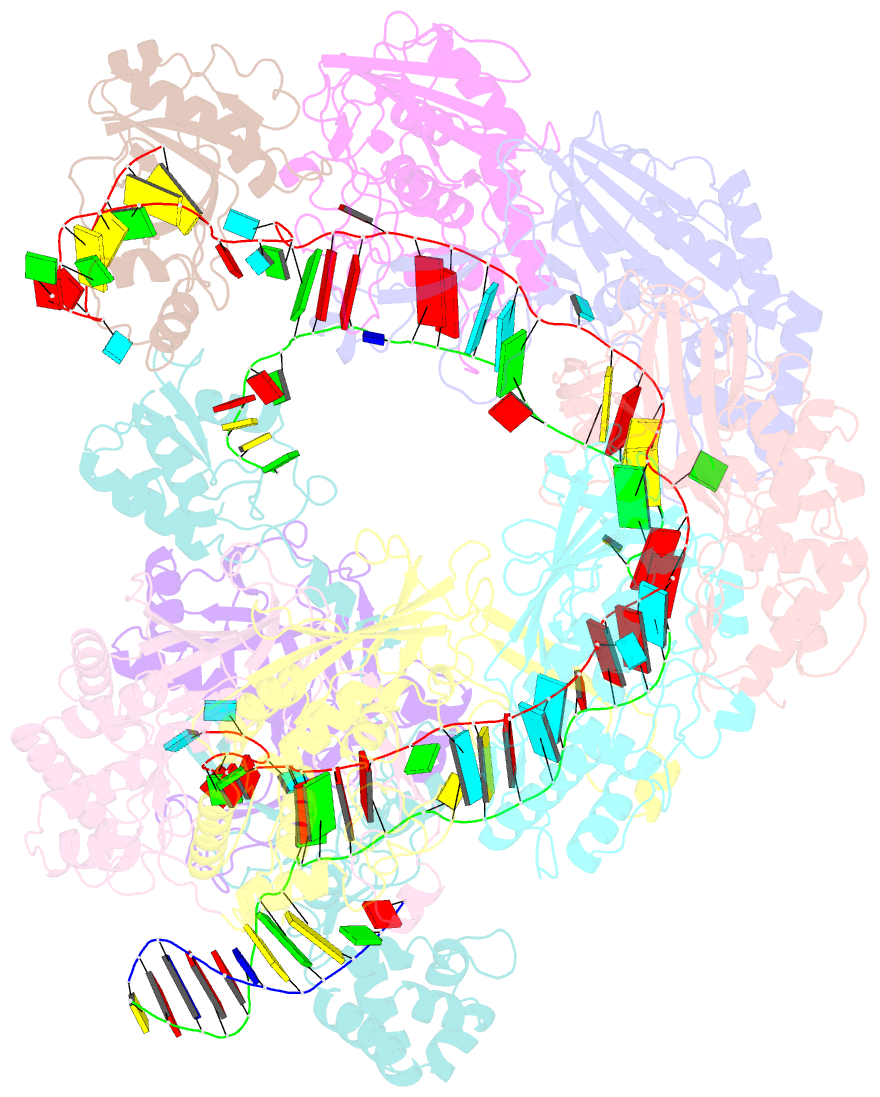Summary information and primary citation
- PDB-id
- 8yeo; SNAP-derived features in text and JSON formats;
DNAproDB
- Class
- RNA binding protein-DNA-RNA
- Method
- cryo-EM (3.44 Å)
- Summary
- Type i-fhnh cascade-dsDNA r-loop complex
- Reference
- Zhang C, Chen F, Wang F, Xu H, Xue J, Li Z (2024): "Mechanisms for HNH-mediated target DNA cleavage in type I CRISPR-Cas systems." Mol.Cell, 84, 3141. doi: 10.1016/j.molcel.2024.06.033.
- Abstract
- The metagenome-derived type I-E and type I-F variant CRISPR-associated complex for antiviral defense (Cascade) complexes, fused with HNH domains, precisely cleave target DNA, representing recently identified genome editing tools. However, the underlying working mechanisms remain unknown. Here, structures of type I-FHNH and I-EHNH Cascade complexes at different states are reported. In type I-FHNH Cascade, Cas8fHNH loosely attaches to Cascade head and is adjacent to the 5' end of the target single-stranded DNA (ssDNA). Formation of the full R-loop drives the Cascade head to move outward, allowing Cas8fHNH to detach and rotate ∼150° to accommodate target ssDNA for cleavage. In type I-EHNH Cascade, Cas5eHNH domain is adjacent to the 5' end of the target ssDNA. Full crRNA-target pairing drives the lift of the Cascade head, widening the substrate channel for target ssDNA entrance. Altogether, these analyses into both complexes revealed that crRNA-guided positioning of target DNA and target DNA-induced HNH unlocking are two key factors for their site-specific cleavage of target DNA.





